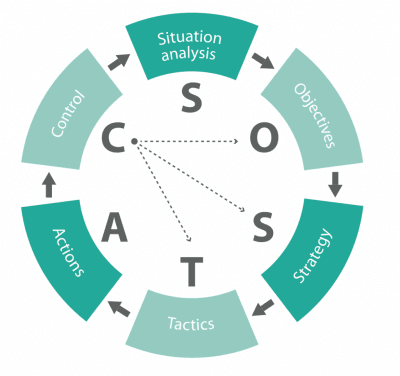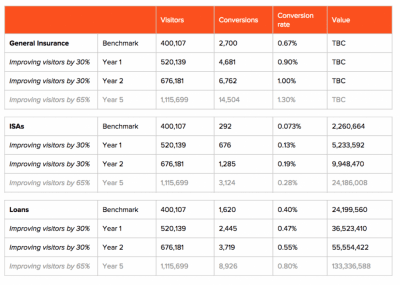Digital Marketing Strategy
Our team knows how to apply digital marketing, such as SEO campaigns and website redesigns, but what makes our team different is the understanding of how these fit in with an overall strategy.
The best starting point is always the marketing strategy
One of the most challenging aspects of Digital Marketing is knowing where to start; is it the website, social media, the branding, or the SEO? Typically companies will focus on the branding and look of a website letting their design staff or agency take the lead. This can present a number of issues as your digital marketing activities evolve. These typically, and ironically, require fundamental brand and design changes.
The truth is that the best starting point is always a digital marketing strategy, as this will help inform every other decision.
We have provided marketing consultancy services and helped create digital marketing strategies for a wide variety of businesses – some that are just starting out, and others that are household names wanting to change their public image or market share, and everything in between. Yes, our team knows how to apply digital marketing, such as SEO campaigns and website redesigns, but what makes our team different is the understanding of how these fit in with an overall strategy.
Marketing Audits and Reports
Our digital marketing audits are technical inspections and detailed reports of your current situation, including website on-site and off-site performance, brand awareness and perception, social reach and much more.
Once the data is gathered we can start the most important part of the report – analysis.
The most complex part of any strategy is often the implementation, so we will work with you to create, explain and plan a pragmatic and realistic digital marketing strategy that you can implement independently or with our continued support.
What’s included in a digital marketing strategy?
Using the SOSTAC model, we will study the data obtained to provide useful insights and practical recommendations based on our findings. This report will cover 6 keys areas:
- Situation Analysis
- Objectives
- Strategy
- Tactics
- Actions
- Control

Where are we now? (Situation Analysis)
The situation analysis will review your digital performance within the overall marketplace, with a particular focus on the company’s ability to attract users through digital channels and turn those users into leads and customers through effective conversion techniques.
The situation analysis will provide a clear report of your digital strengths, competitor and marketplace threats, and opportunities to improve the existing digital presence amongst the target market, as part of your strategy going forward.
The situation analysis will cover key factors such as target audience behaviour, competitor and intermediaries analysis, and will include, but not be limited to, sections such as:
- Website performance
-
- Visitor acquisition
- Retention and engagement
- Conversion capabilities and opportunities
- Information architecture review
- Usability
- Digital channel and communications review
- User experience analysis
- Channel usage and trends
- Best practice comparison
- Analytics and measurement platforms
- Competitor review
- Competitor benchmarking
- Brand monitoring report – what are people saying about you across social media and other online channels
- Marketplace map
- Defining the target audience and behaviours
- Identifying digital relationship and affiliate opportunities
Where do we want to be? (Objectives)
Defined objectives will provide a vision of the future, in the form of numerical goals for digital activity.
Once existing performance levels and benchmarks have been identified during the situation analysis, objectives which will be broken down into the following three areas, which represent a typical customer journey.
- Acquisition objectives will focus around increasing the level of brand awareness and interaction online, through digital techniques such as search engine marketing, online advertising and digital PR and relationships.
- Engagement objectives will identify digital opportunities to provide information, and the format of that information, to users that will enhance their online experience, and drive them towards a point of conversion. Objectives will cover areas such as content marketing, remarketing, email marketing and marketing automation, all with the aim of developing customer relationships and promoting customer longevity.
- Conversion objectives will look at maximising the number of people completing a transaction on the website (or via the telephone if more appropriate). Objectives will cover techniques such as online lead generation, landing page optimisation, call-to-action design and placement, and conversion driven by affiliate marketing.
How do we get there? (Strategy)
The strategy will be a summary of how you will meet the defined objectives through an integrated digital approach to marketing activity. Key questions that will be answered within a strategy will include:
- How do we effectively reach and engage the different audience types?
- How do we raise brand awareness online through owned channels and digital relationships?
- What affiliate relationships are available and what return will they generate?
- How do we increase customer interactions digitally?
- How do we use digital channels to develop long-term relationships with customers?
- How do we maximise lead generation through digital channels, both enquiry/quote based and direct sale based?
- How do we ensure quality and relevance in our lead generation?
- How do we measure our multi-channel approach to marketing?
How exactly do we get there? (Tactics)
This is where the actionable tactics of the strategy will be detailed. A thorough plan of digital marketing activity to support the strategy will be included, explaining the following implementation and integrations:
- User journey opportunities and activity
- Conversion opportunities and activity
- Search engine marketing (paid and organic) opportunities and activity
- Digital relationship opportunities and activity
- Email opportunities and activity
- Content and digital PR opportunities and activity
- Automation opportunities and activity
- Online advertising opportunities and activity
- Social media opportunities and activity
Usually, the plan of activity will cover an initial two year period, but we would also recommend a regular review of the approach in line with digital changes and emerging technologies.

A roadmap of activity (Actions)
All activity will be summarised within an easy to digest, visual roadmap of activity. This roadmap of actions will identify priorities, roles and responsibilities, and will be supported by key milestones, such as financial year-ends, audience-specific activities (such as school holidays for the education market and Christmas for the retail market) and seasonal considerations.
How do we monitor performance? (Control)
In the final section of the digital strategy the method by which activity will be measured and reported will be defined, in line with the strategic objectives. Key sections will include:
- User testing requirements (setup and reporting)
- Analytics and insight software recommendations and setup
- Client and stakeholder dashboard recommendations
- Formal reporting and data review processes across all activity
- Roles and responsibilities in achieving effective controls and measurements
- Demonstration of ROI and cost per conversion
Integrated marketing strategy
Whilst Digital Marketing is incredibly powerful and prominent in any effective marketing strategy, it is only part of the overall vision.
Traditional offline marketing communications still play a massive role in business growth and development and should be considered and planned in partnership with the digital element of your marketing strategy.
This is why we always recommend incorporating your offline marketing activities, goals and campaigns into our digital strategies so that together we can plan for a fully integrated marketing campaign.
This might be at the most top overview level such as running a product launch simultaneously across all offline and online formats, or at a more detailed level, which could be the incorporation of redirect tracking-links and phone numbers to enable digital reporting on print advertisements.